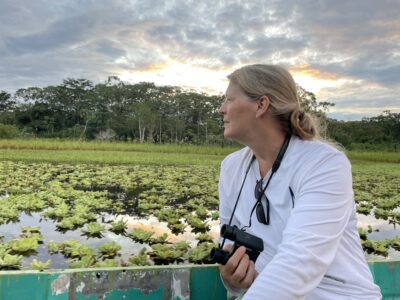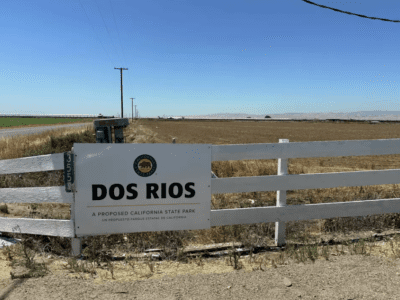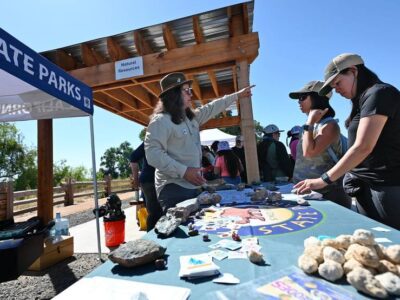- Central Valley salmon populations are struggling to survive with record-low returns this year.
- Restored floodplains up and down the valley will provide wildlife corridors and critical habitat needed to prevent the extinction of native fish.
- Restored floodplains can also protect communities from flooding, predicted to be up to 500% more severe in the coming decades due to climate change.
This winter, including two back-to-back-storms this week, Californians witnessed devastating effects of storms on communities: homes perched on bluffs crumbling into the ocean, cars and their passengers stranded in flooded streets, and swift water pushing into neighborhoods. But does flooding always have to be a bad thing?
For researcher Carson Jeffres of UC Davis Center for Watershed Sciences, it doesn’t. “Flooding always has a negative connotation,” says Jeffres. “But it also has a huge positive that goes along with it.”
His ground-breaking work shows how floodplains in the Central Valley provide critical habitat for native fish hanging on by a thread. Efforts to protect communities from flooding in the last century constricted the river from spreading out to create natural floodplains. Without access to floodplains, native fish populations are struggling, especially salmon. “The fall-run salmon are in functional collapse,” says Jeffres. He estimates a couple hundred adult salmon are in the upper Sacramento River right now. Historically, millions of fish would return to the river system each year.
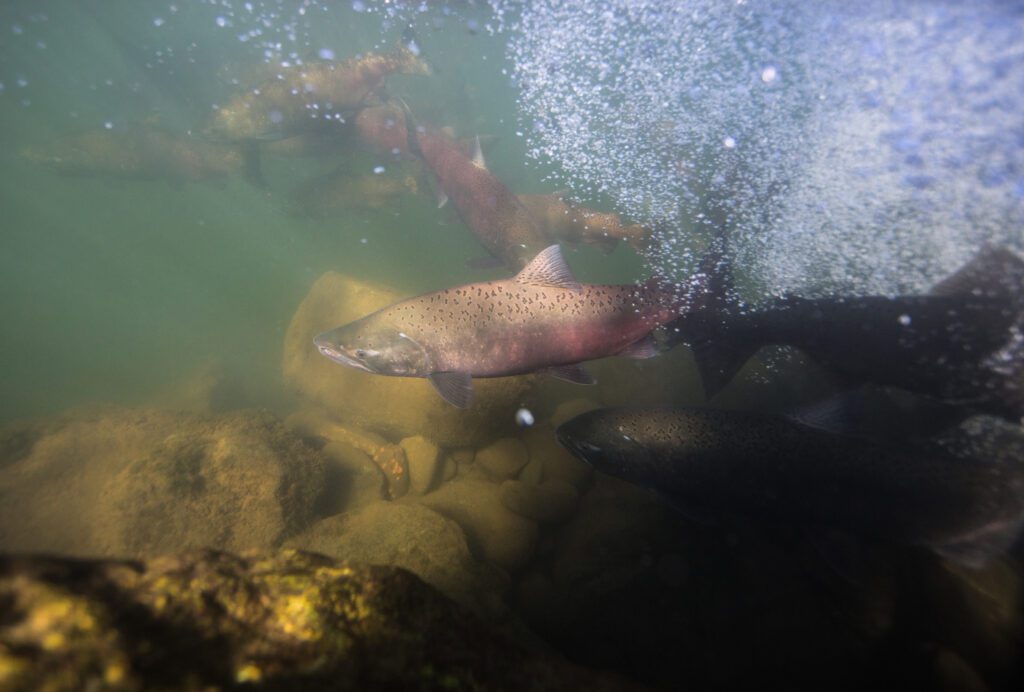
The good news is, we can protect communities from the devastating impacts of floods while giving rivers room to flood safely by strategically restoring and reconnecting floodplains. This nature-based solution sees river landscapes as thriving corridors for wildlife, helping ensure struggling species like salmon can recover from the brink of extinction. Floodplain corridors along rivers help water slow down, spread out, and sink into the ground. The effects include reducing flood risk for nearby communities, improving water quality by flushing and diluting contaminants, and recharging underground aquifers for water storage in addition to providing critical wildlife habitat.
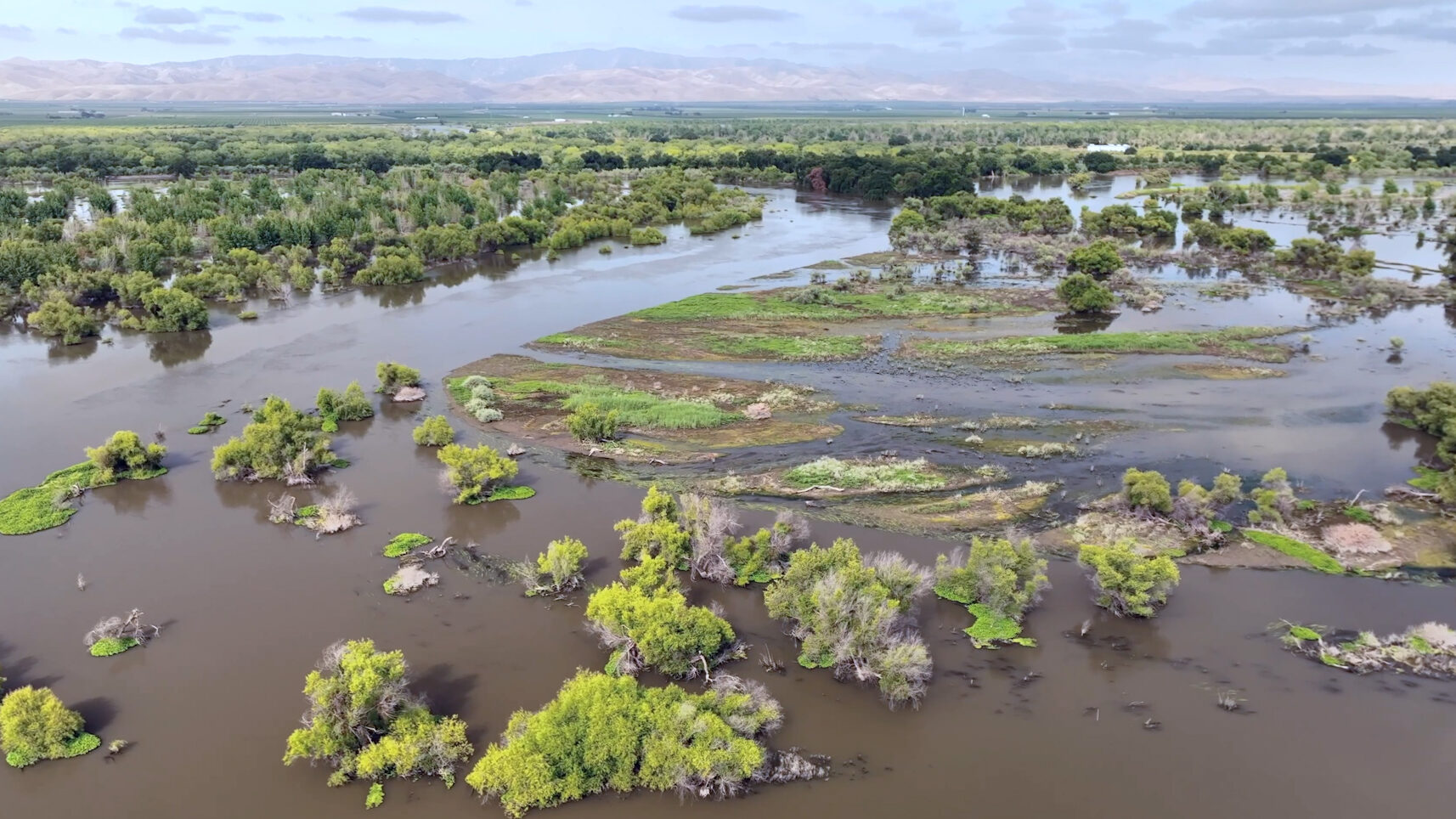
With climate change becoming more pronounced each year, bold action and focused investment to restore habitat for critically endangered salmon and vulnerable communities are needed now more than ever. River Partners, our research partners including UC Davis Center for Watershed Sciences, and our statewide restoration and flood management allies are pushing forward at a scale never undertaken in California to reshape and revive rivers.
A Restored Floodplain Offers Hope for Salmon
At the 175-acre Willow Bend Preserve along the Sacramento River near the farming town of Colusa, River Partners transformed a chronically flooded walnut orchard into rich salmon habitat. By reconnecting a historic floodplain to the river channel salmon can safely access the floodplain habitat once again.
In 2023, Willow Bend flooded for the first time since restoration was completed in 2022. And, it flooded again over the last few weeks.

“What happened was amazing,” says River Partners Associate Science Director Michael Rogner. “Thousands of young salmon were washed onto the site during the flood, and then they had 24 days to feast on the food rich floodplain. This incubation period is critical, as the size they are when they reach the Golden Gate determines how well they’ll do in the ocean, and how many will return to spawn.”
“We’re trying to mimic flood processes we historically saw on the landscape at places like Willow Bend,” says Jeffres. His team conducted monitoring that showed that the most abundant species on site was Chinook Salmon, accounting for almost 30% of fish captured. The restoration worked, and fish reaped the benefits.
In the Sacramento River pre-Shasta Dam, floodplains would have received huge pulses of water during storm surges many times throughout the season. In today’s world, there are very limited opportunities for river-adjacent areas to flood safely since the water cycle is drastically altered.
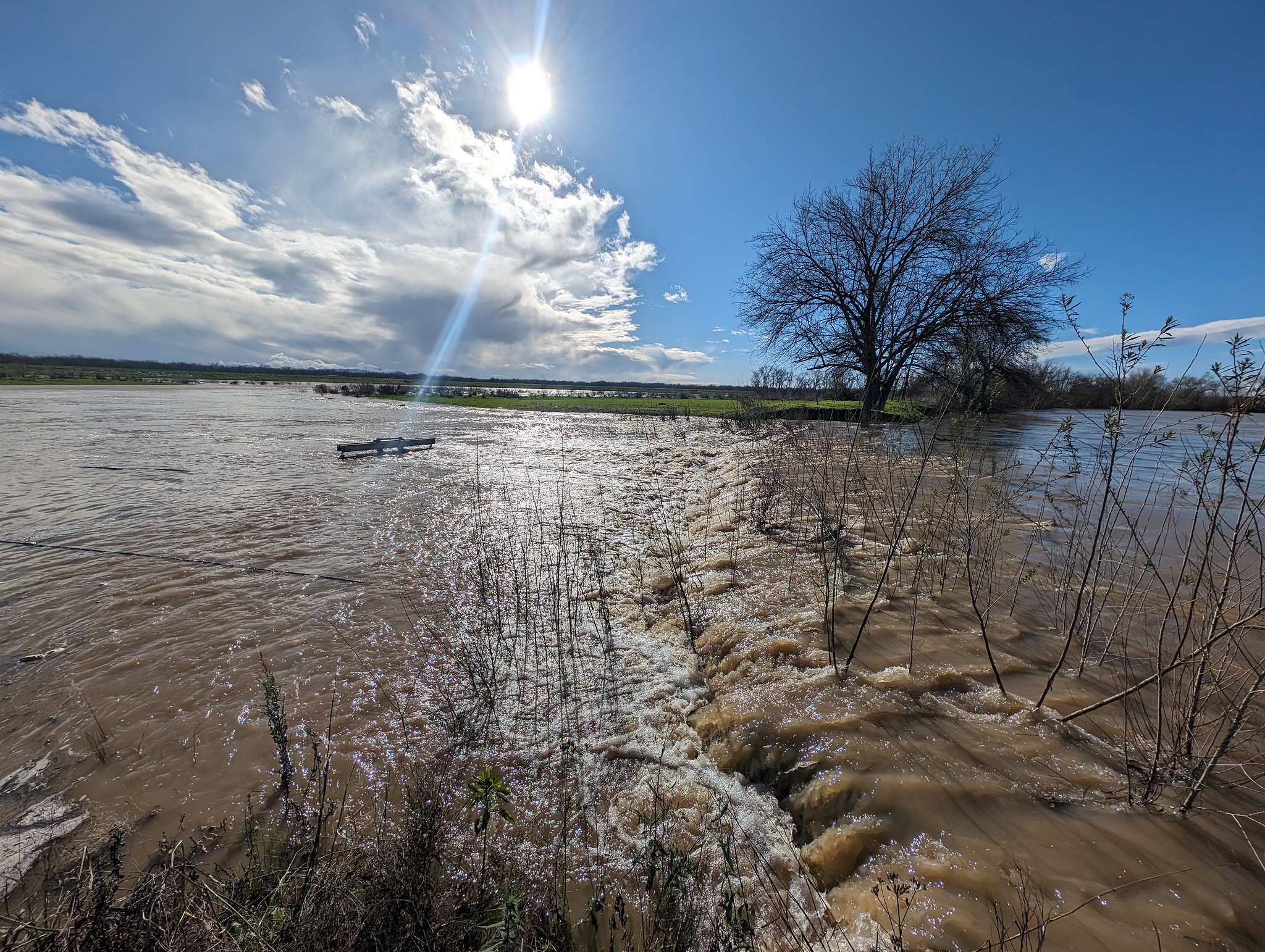
That’s why River Partners teamed with engineers to build a first-of-its-kind fish gate at Willow Bend that allows young fish to get onto the floodplain and then safely exit back to the river when water levels subside. By controlling how fast the water drains off the floodplain, we can reap the most benefit for fish.
“If the water drained out too fast it won’t have much of a benefit to the fish. We want to see the water flood on to Willow Bend and slowly drain over weeks and months,” says Jeffres. “We have the opportunity to mimic some of those processes in a non-natural landscape. We’re setting the stage for recovery.”
River Partners continues to partner with UC Davis to monitor and collect data to better understand how these restored floodplains benefit imperiled fish populations. The goal? To restore floodplains up and down the Central Valley and give salmon the habitat-boost they need to survive.“Having two wet years is giving me hope,” says Jeffres. “We need all the hope we can get because it’s pretty grim out there for fish.”
How Rivers Lost Their Floodplains
Up until a couple centuries ago, rivers meandered across the Central Valley freely. Riparian corridors and wet river forests wove a tapestry of habitats that supported some of the biggest salmon runs in the world. Rivers flooded vast wetlands and marshy areas nearly four million acres in size, an area four times the size of Rhode Island, supporting fish, migratory birds, tule elk, and grizzly bears. Native Californians understood the flood cycles and migrated seasonally with food sources and away from floodwaters.
As waves of settlers arrived in California in the mid-1800s, they drained wet swamplands to plant crops. Large-scale reclamation projects in the 1900s erected dams and over time eradicated most of the natural tapestry of floodplains and wetlands in the Delta and Central Valley. In the Sacramento River watershed, Shasta Dam was completed in 1945, effectively removing the natural hydrological forces that shaped the Sacramento Valley and the food webs that sustained salmon and life over millennia. Cities and neighborhoods sprung up in the middle of historic floodplains.
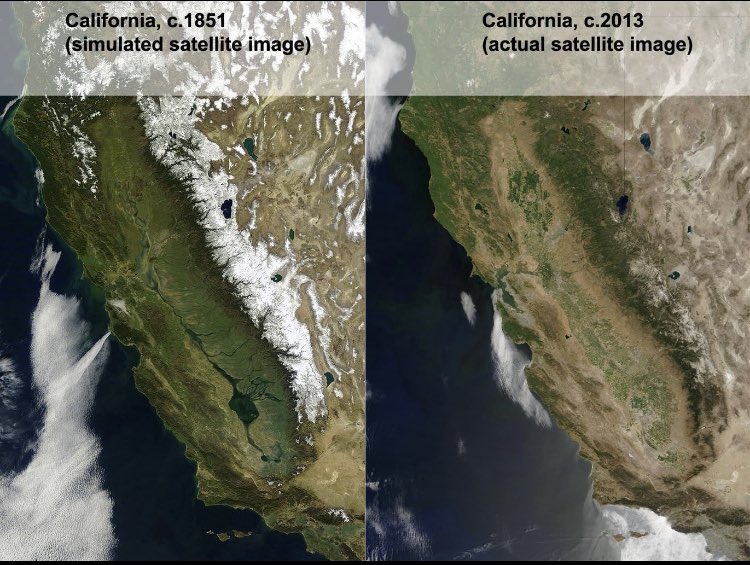
Today, the Central Valley has one of the highest rates of flood risk in the United States. Over the coming decades, scientists predict climate change will increase the frequency and intensity of extreme-weather events and damaging floods in the valley by up to 500%. Catastrophic floods would not only be devastating to California, which has the fourth largest economy in the world, but also to the national economy and beyond.
Less than a 100 years ago, the Sacramento River supported one of the greatest salmon runs in the world. This year, salmon return is one of the worst ever recorded. While California’s flood control infrastructure is the foundation of one of the most protective economies on the planet and allows millions of people to live safely in the Central Valley, salmon and other native freshwater fish face likely extinction in the coming decades if current population trends continue. Fish lack a productive and diverse range of habitats that healthy living rivers once provided.
Expanding Floodplain Restoration for Imperiled Salmon
A recent report from California Trout estimates 45% of salmon runs will be extinct within the next 50 years. In October 2023, state agencies took emergency action to safeguard the future of endangered Central Valley spring-run Chinook Salmon, afraid of losing them in the wild altogether.
But recovery is still possible. River Partner Senior Restoration Ecologist Mike Davis is hopeful. “As long as these imperiled fishes exist there’s the promise that we can keep the door open for a potential recovery,” he says. “In the case of Central Valley salmon it’s potentially a big recovery if we restore habitat at the scale we know we can.”
River Partners has already restored nearly 20,000 riverside acres along 212 miles of rivers in California since 1998. Our flagship project, Dos Rios Ranch Preserve located at the confluence of the San Joaquin and Tuolumne rivers near Modesto is California’s largest public-private floodplain restoration, providing 2,100 acres of restored habitat for imperiled species while lowering flood risk for downstream communities. Dos Rios Ranch was featured on the cover of the 2022 Central Valley Flood Protection Plan and provides a blueprint for how to accommodate increased flood flows while offering refuge for struggling wildlife.
In the Sacramento Valley, another “Dos Rios” is in the works: Dos Rios Norte. Located at the confluence of the Sacramento and Feather rivers and Butte Creek just north of the Sacramento International Airport, Dos Rios Norte will provide nearly 1,600 acres of haven for endangered wildlife including Chinook salmon. River Partners purchased the property in 2023 with $22.6 million from the Wildlife Conservation Board. River Partners will restore the floodplain wetland, and riparian habitats to renew the river ecosystem. Following habitat restoration, the water rights associated with the property, which are some of the oldest in California, will be dedicated for streamflow enhancement to benefit fish and wildlife.
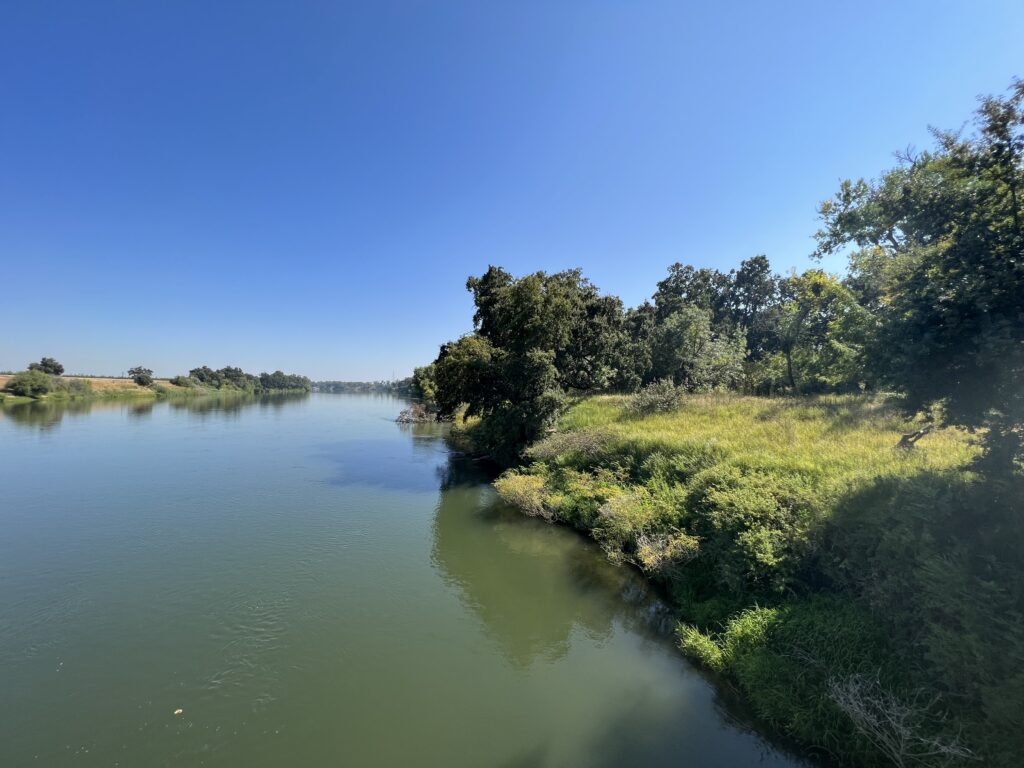
Many more projects are in the pipeline. Rancho Breisgau, critical floodplain habitat for Chinook Salmon at the confluence of Battle Creek and the Sacramento River near Redding, is currently being restored. Turning Point Preserve, located along the Sacramento River between Colusa and Sacramento, will soon be restored, offering another safe haven for struggling wildlife and boosting flood protection for vulnerable communities.
Flooding is a natural, inevitable process. River Partners is embracing what water wants and restoring river floodplains up and down the state. Preparing today for the floods of tomorrow means salmon will have the habitat they need to make and unprecedented recovery. And it means vulnerable communities can better weather the coming storms.
By working with nature instead of against it, California can learn to welcome floodwaters with open arms.


